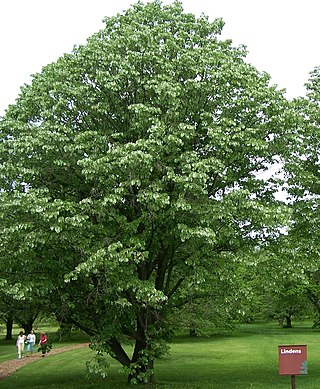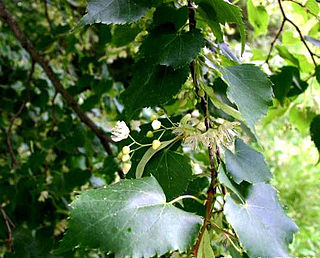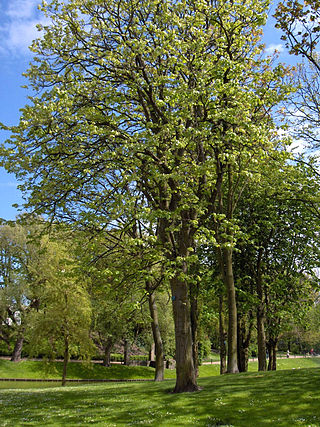Related Research Articles

Isaiah was the 8th-century BC Israelite prophet after whom the Book of Isaiah is named.

The most common meaning for Lucifer in English is as a name for the Devil in Christian theology. It appeared in the King James Version of the Bible in Isaiah and before that in the Vulgate, not as the name of a devil but as the Latin word lucifer (uncapitalized), meaning "the morning star", "the planet Venus", or, as an adjective, "light-bringing". It is a translation of the Hebrew word הֵילֵל, hêlēl, meaning "Shining One".
Zaanaim, Zaanannim or Bezaanaim is a place name applied to one or two locations in the Hebrew Bible. According to Serge Frolov (2013), its location "cannot be determined with any degree of certainty."

Givat HaMoreh is a hill in northern Israel on the northeast side of the Jezreel Valley. The highest peak reaches an altitude of 515 metres (1,690 ft), while the bottom of the Jezreel Valley is situated at an altitude of 50–100 metres (160–330 ft). North of it are the plains of the Lower Galilee and Mount Tabor. To the east, Giv'at HaMoreh connects to the Issachar Plateau. To the southeast it descends into the Harod Valley, where the 'Ain Jalut flows eastwards into the Jordan Valley.
Jah or Yah is a short form of the tetragrammaton יהוה (YHWH), the personal name of God: Yahweh, which the ancient Israelites used. The conventional Christian English pronunciation of Jah is, even though the letter J here transliterates the palatal approximant. The spelling Yah is designed to make the pronunciation explicit in an English-language context, especially for Christians who may not use Hebrew regularly during prayer and study.

Tilia is a genus of about 30 species of trees or bushes, native throughout most of the temperate Northern Hemisphere. The tree is known as linden for the European species, and basswood for North American species. In Great Britain and Ireland they are commonly called lime trees, although they are not related to the citrus lime. The genus occurs in Europe and eastern North America, but the greatest species diversity is found in Asia. Under the Cronquist classification system, this genus was placed in the family Tiliaceae, but genetic research summarised by the Angiosperm Phylogeny Group has resulted in the incorporation of this genus, and of most of the previous family, into the Malvaceae.

Tilia cordata, the small-leaved lime or small-leaved linden, is a species of tree in the family Malvaceae, native to much of Europe. Other common names include little-leaf or littleleaf linden, or traditionally in South East England, pry or pry tree. Its range extends from Britain through mainland Europe to the Caucasus and western Asia. In the south of its range it is restricted to high elevations.

Tilia platyphyllos, the large-leaved lime or large-leaved linden, is a species of flowering plant in the family Malvaceae (Tiliaceae). It is a deciduous tree, native to much of continental Europe as well as southwestern Great Britain, growing on lime-rich soils. The common names largeleaf linden and large-leaved linden are in standard use throughout the English-speaking world except in the British Isles, where it is known as large-leaved lime. The name "lime", possibly a corruption of "line" originally from "lind", has been in use for centuries and also attaches to other species of Tilia. It is not, however, closely related to the lime fruit tree, a species of citrus.

Pistacia terebinthus also called the terebinth and the turpentine tree, is a deciduous shrub species of the genus Pistacia, native to the Mediterranean region from the western regions of Morocco and Portugal to Greece and western and southeastern Turkey. At one time terebinths growing on the eastern shores of the Mediterranean Sea were regarded as a separate species, Pistacia palaestina, but these are now considered to be a synonym of P. terebinthus.
Abomination is an English term used to translate the Biblical Hebrew terms shiqqutsשיקוץ and sheqetsשקץ, which are derived from shâqats, or the terms תֹּועֵבָה, tōʻēḇā or to'e'va (noun) or 'ta'ev (verb). An abomination in English is that which is exceptionally loathsome, hateful, sinful, wicked, or vile. The term shiqquts is translated abomination by almost all translations of the Bible. The similar words, sheqets, and shâqats, are almost exclusively used to refer to unclean animals.

In the French formal garden, a bosquet is a formal plantation of trees in a wide variety of forms, some open at the bottom and others not. At a minimum a bosquet can be five trees of identical species planted as a quincunx, or set in strict regularity as to rank and file, so that the trunks line up as one passes along either face. In large gardens they were dense artificial woodland, often covering large areas, with tall hedges on the outside and other trees inside the hedges. Symbolic of order in a humanized and tamed gardens of the French Renaissance and Baroque French formal gardens, the bosquet is an analogue of the orderly orchard, an amenity that has been intimately associated with pleasure gardening from the earliest Persian gardens of the Achaemenid Empire.

Fohren-Linden is an Ortsgemeinde – a municipality belonging to a Verbandsgemeinde, a kind of collective municipality – in the Birkenfeld district in Rhineland-Palatinate, Germany. It belongs to the Verbandsgemeinde of Baumholder, whose seat is in the like-named town.
Isaiah 1 is the first chapter of the Book of Isaiah, one of the Book of the Prophets in the Hebrew Bible, which is the Old Testament of the Christian Bible. In this "vision of Isaiah concerning Judah and Jerusalem", the prophet calls the nation to repentance and predicts the destruction of the first temple in the siege of Jerusalem. This chapter provides an introduction to the issues of sin, judgement, and hoped-for restoration which form the overarching structure of the whole book. It concludes with 'a reference to the burning of those who trust in their own strength', in a fire which cannot be 'quenched', a relatively rare word which is also used in the last verse of the book, thereby linking together beginning and ending of this whole book. It is traditionally read on the black sabbath immediately preceding the 9th of Av fast day.
Isaiah 40 is the fortieth chapter of the Book of Isaiah in the Hebrew Bible or the Old Testament of the Christian Bible, and the first chapter of the section known as "Deutero-Isaiah", dating from the time of the Israelites' exile in Babylon. This book contains the prophecies attributed to the prophet Isaiah, and is one of the Books of the Prophets. Parts of this chapter are cited in all four canonical Gospels of the New Testament.
Isaiah 6 is the sixth chapter of the Book of Isaiah in the Hebrew Bible or the Old Testament of the Christian Bible. This book contains the prophecies attributed to the prophet Isaiah, and is one of the Books of the Prophets. It records the calling of Isaiah to be the messenger of God to the people of Israel.
Isaiah 11 is the eleventh chapter of the Book of Isaiah in the Hebrew Bible or the Old Testament of the Christian Bible. This book contains prophesies attributed to the prophet Isaiah. This chapter can be divided into two main parts, verses 1–9 and verses 11–16, with verse 10 as a connecting statement between them. The New International Version entitles the chapter "The Branch from Jesse".

Isaiah 14 is the fourteenth chapter of the Book of Isaiah in the Hebrew Bible or the Old Testament of the Christian Bible. This book contains the prophecies attributed to the prophet Isaiah, and is one of the Books of the Prophets.
Isaiah 22 is the twenty-second chapter of the Book of Isaiah in the Hebrew Bible or the Old Testament of the Christian Bible. This book contains the prophecies attributed to the prophet Isaiah, and is one of the Books of the Prophets. This chapter contains a prophecy against "untimely rejoicing in Jerusalem" and "a threefold prediction of Shebna's fall and of Eliakim's elevation."
Isaiah 27 is the twenty-seventh chapter of the Book of Isaiah in the Hebrew Bible or the Old Testament of the Christian Bible. This book contains the prophecies attributed to the prophet Isaiah, and is one of the Books of the Prophets. Chapters 24-27 of Isaiah constitute one continuous poetical prophecy, sometimes called the "Isaiah Apocalypse".
Isaiah 44 is the forty-fourth chapter of the Book of Isaiah in the Hebrew Bible or the Old Testament of the Christian Bible. This book contains the prophecies attributed to the prophet Isaiah, and is a part of the Books of the Prophets.
References
- ↑ "Teil Tree". 8 September 2020.
"Teil Tree " is mentioned only in the book of Isaiah.
Isaiah 6:13 "But yet in it shall be a tenth, and it shall return, and shall be eaten: as a Teil Tree, and as an oak, whose substance is in them, when they cast their leaves: so the holy seed shall be the substance thereof."